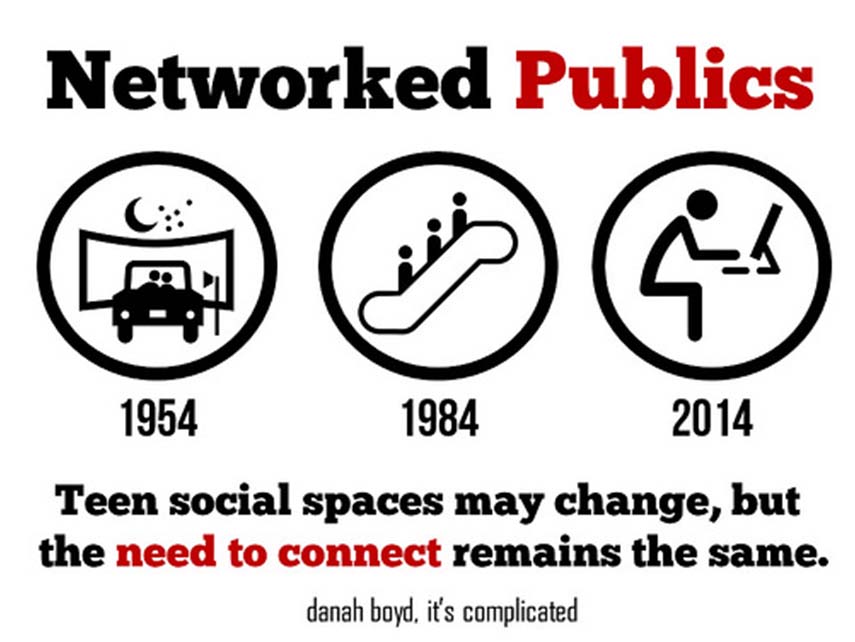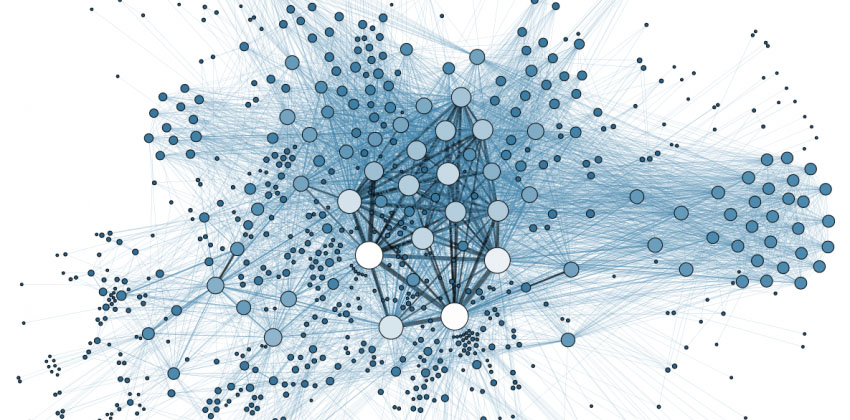Danah Boyd helped make the term ‘Networked Publics’ wider spread in her powerful work, “It’s Complicated, The Social Lives of Networked Teens.”
Networked publics are groupings of people that are restructured by networked technologies. So, a networked public can mirror a physical public, or it can establish a unique public, available only via technology. Facebook is likely the most well known example of a networked public, seeing clusters of people use the technology to gather, communicate, inform, persuade, and more.
But does your school need a networked public? After all, Facebook has not had a lot of great press lately actually finding itself as the “most hated company in America” based on one study. Selling user data is really not a good look…
As the Chief Academic Officer at Campus, I try to utilize my professional history to help institutions succeed. In twenty plus years as an academic researcher, as a University Chief Innovation Officer (where I implemented a networked public), as a professor, and as a higher education consultant, I have seen the power of education technology when used effectively. While this is not always the case, technology can be a true game changer in the right hands.
Networked publics are no exception. I had the privilege of working for the former CTO at Arizona State University. During that time, I heard story after story of the work ASU did in researching and ultimately implementing a connection between their LMS (Blackboard) and a networked public (Facebook). The reasons for doing so were clear. Students felt unsupported. Students struggled with a bevy of “non-cognitive” footholds most academics now understand lead to more than 50% of all dropouts. They had no connection points. (Neither did staff nor faculty.) But does that really matter?
Consider the following quote from Michael Stallard, author of Connection Culture (2015):
“A lack or a deficiency of connection makes people feel unsupported, left out or lonely. When we feel disconnected, our bodies move into a state called “stress response,” which triggers a “fight or flight” readiness. That’s good if we are facing a short-term threat, such as being mugged or needing to help someone who is hurt. But it becomes a problem when people are stuck in a constant state of stress response because they will always feel disconnected. Research has shown that feeling disconnected over time sabotages our productivity and happiness, and shaves years off of our life expectancy. . . . . However, many colleges are under enormous financial pressures to do more with fewer resources to support more students. This reality contributes to a drift toward indifference on campuses because people are so busy they don’t take time to develop supportive relationships. But the higher education community is beginning to see that campus culture matters…”
As important as that all is, there is an important distinction here. That ASU implementation was only left on for a few weeks. Why? Because the school got one part wrong. They combined personal socialness with school socialness. Teachers did not like their public feed including comments from students. Students did not like parents or peers seeing reminders from professors. My former boss who did that implementation often used this quote from a student to sum things up, “I want to keep my beer separate from my books.” And so a year of work and more than $1M was simply turned off. ASU would need to seek other ways to connect people, this time making personal lives distinct from school lives.
So while we can learn a valuable lesson from trying to reach beyond the “walls” of school, it does not change the importance within those walls. One of our tag lines at Campus is, “Connection is Everything.” I hope you are starting to see why. (I can also tell you this is why I implemented a private, networked public at my university.)
But we know that connection is not only a function of socialness. Lieberman’s research (Social, 2013) was also clear that when people feel left out, lonely, or even snubbed, they experience pain equal to stepping on a nail. Social pain is just plain pain to our brains. But not everyone needs the same kind of social experiences. So notice that when we talk about “connection” it is not solely about connecting people to groups, individuals, experts, etc. It’s about connecting people to everything that matters.
 A pure networked public, sometimes called a community system by academic administrators, by itself is likely going to struggle to find acceptance and widespread usage without tremendous strategic thought, resource support, and dedicated action. However, by incorporating other types of connection, things change dramatically.
A pure networked public, sometimes called a community system by academic administrators, by itself is likely going to struggle to find acceptance and widespread usage without tremendous strategic thought, resource support, and dedicated action. However, by incorporating other types of connection, things change dramatically.
Similar to a networked public is (what is commonly referred to as) a student portal. We have blogged before about studies showing that most CIOs are unsatisfied with their existing portals and that students, faculty, and staff are beyond unsatisfied. But look at the reason for portals. Schools need to connect people to systems. True, most of those connections are super simple, single-sign-on only, which is a shame in 2019! Connections that include updates, push notifications, and click-thru to functionality is so possible today! But the general idea makes sense. Students need access to the LMS, the registration system, and the payment platform, so schools provide links to those things. But left as a user-facing site-map, with no ROI and no ability to provide meaningful information or feedback, existing, clunky portals don’t really do the trick either.
Then there are mobile apps. Most schools realized around 2015 that if they wanted to be relevant and claim students came first, the school needed a mobile app. But here again, a lack of connection to so many aspects of the college / university experience saw little efficacy for these systems. Sure, students could now get a map of the school on their devices, but connections to groups, financial forms, and so many others things were left behind.
We haven’t even touched on the importance of better, modern, robust communication options. (Yes, students dislike email. But also yes, this problem is fixable!) We didn’t discuss how to better connect people to content at specific points in time. (People don’t look for content until they need it, so it should be searchable and easy to bookmark for later.) We didn’t even talk about synchronous as well as asynchronous messaging. (Allowing for usage according to preference, context, need, and more.)
See, it comes back to connection. And connection is everything.
There is a reason stand-alone instances of networked publics like Slack or Yammer aren’t finding a footing in higher education. Just as there is a reason mobile offerings like Ready or Modo feel so incomplete. This is also why portals, often a giveaway or cheap upsell by SIS companies are seeking better, more modern partnerships. Connection needs to include connecting to everything that matters, not just people, not just systems, not just content, not just smartphones, not just support…EVERYTHING!
You might have missed it as the Fall term was barreling toward finals, but last November Campus took second place at a Pitch Competition. We weren’t “sexy” enough to overcome the artificial intelligence solution which grades work in computer science courses. But despite possibly seeming “plain” or “vanilla” to some, we were lauded by both AWS technologists and University CTO’s alike due to the importance of connection. It may be true that higher education is finally starting to understand connection’s significance, but very few are doing it well today. The infrastructure is not set up for connectedness, but instead in silos. That is where Campus shines.
We hope you will check out our Pitch (see the YouTube video above). We hope you’ll explore more about connectedness through our blogs or website. (In particular, check out the blogs written specifically to departments and leaders!) Discover the power of fully automated, completely integrated connectedness, joining people, content, systems, communication, support, and more.
So do you need a networked public for your institution? It’s probably more fitting to say you need a networked public connected to a portal connected to a mobile app. But ultimately the answer is yes, you need those things.
I hope you will contact our team to find out more about our networked public, modern student portal and mobile app that connects everyone to everything that matters. I hope you will ask about new forms of data created by a hyper-connected, networked public, and the profound impact it can have on new enrollments, persistence, and even alumni affinity. I hope you will explore why connection is everything.
Good luck and good learning.
Dr. Jeff Borden and the Campus team